Introduction
How Big Do Rabbits Get: Rabbits, those charming and fluffy creatures often associated with idyllic countryside scenes, come in a variety of shapes and sizes. Their endearing appearance and gentle demeanor have made them popular pets and subjects of fascination for animal enthusiasts around the world. One of the most common questions that arise when considering these delightful creatures is: “How big do rabbits get?” From tiny dwarf breeds that can fit in the palm of your hand to larger breeds that rival the size of some house cats, the dimensions of rabbits span a wide spectrum.
The factors influencing a rabbit’s size are as diverse as the breeds themselves, encompassing genetics, diet, environment, and even the care they receive. In this exploration, we delve into the captivating world of rabbit sizes, uncovering the fascinating range of sizes these creatures can attain and shedding light on the factors that contribute to their growth. Whether you’re a curious animal lover or a prospective rabbit owner, understanding the potential size of these enchanting animals can deepen your appreciation for their uniqueness and individuality.
A rabbit’s diet and nutrition during its early stages of life can have a profound impact on its growth. Young rabbits need a balanced diet rich in nutrients to support their rapid growth. High-quality hay, fresh vegetables, and specially formulated rabbit pellets are essential components of a healthy diet. Malnutrition during the early stages of development can lead to stunted growth and health issues later in life. The environment in which a rabbit lives can influence its growth. Rabbits eat that are kept in spacious enclosures and have opportunities for exercise tend to develop stronger muscles and bones. In contrast, rabbits that are kept in cramped or inadequate living spaces might experience growth limitations due to restricted movement.
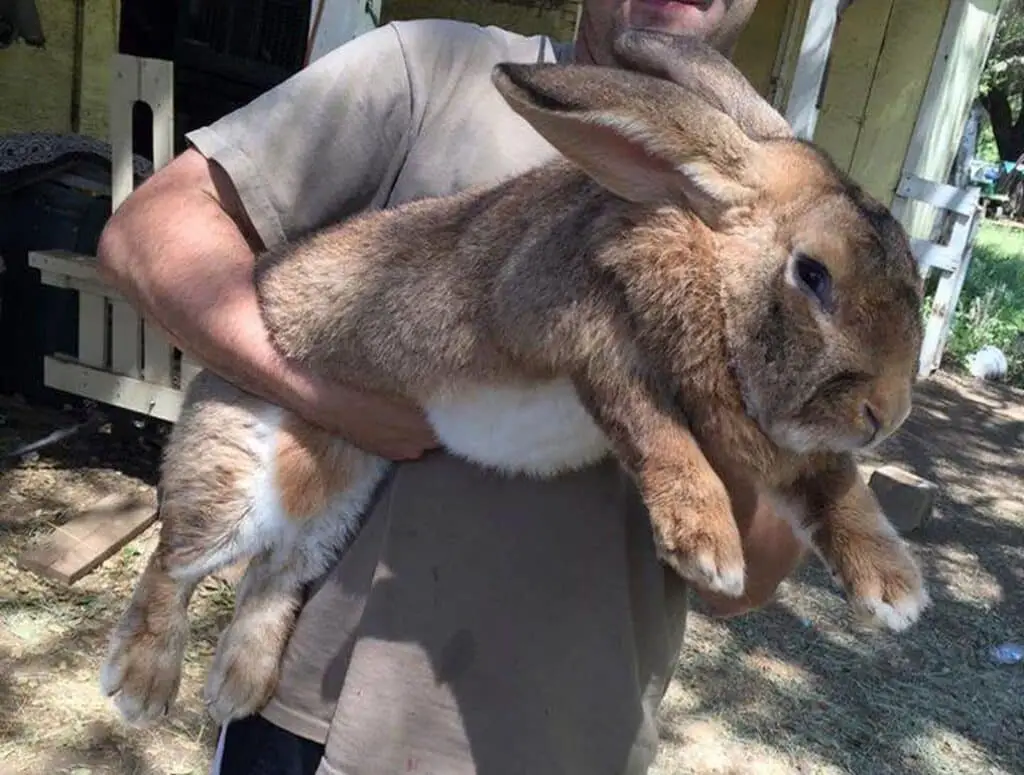
Is A rabbit as big as a cat?
A two-pound rabbit might be small enough that your cat will try to chase after it, but a giant 12-pound rabbit might even be bigger than your cat.
Rabbit Dimensions
Rabbits, known for their adorable appearance and twitching noses, come in various breeds, each with its own unique size. On average, domestic rabbits typically range from 2 to 4 pounds in weight and 8 to 20 inches in length. Their compact and lightweight bodies are adapted for agility and swift movements, allowing them to navigate various terrains with ease. Their ears, often long and erect, serve multiple purposes, including thermoregulation and communication.
Cat Dimensions
Cats, both domesticated and wild, exhibit a wider range of sizes compared to rabbits. Domestic cats generally weigh between 5 to 20 pounds and measure about 9 to 10 inches in height at the shoulder and 18 to 20 inches in length. Like rabbits, cats also come in various breeds, which can lead to differences in size and physical features. Their bodies are well-suited for hunting, with sharp claws, keen senses, and a flexible spine that enables them to pounce on prey with precision.
Comparing Sizes
In direct comparison, rabbits are usually smaller than cats. Their lightweight frames and shorter limbs contribute to their diminutive size. While both animals are classified as mammals and share certain anatomical features, such as fur, four legs, and a tail, their evolutionary paths have led to distinct physical characteristics that set them apart.
Adaptations and Lifestyles
The size difference between rabbits and cats is largely attributed to their evolutionary adaptations and lifestyles. Rabbits, being prey animals, have evolved to be smaller and quicker to evade predators. Their small size helps them fit into narrow burrows and crevices, offering protection from potential threats. On the other hand, cats, as predators, have evolved to be larger and more muscular, equipping them with the strength and agility needed for successful hunting and climbing.
What is the largest rabbit?
The Flemish giant rabbit is the largest type of rabbit in the world. They’re usually anywhere from 2.5 to 4 feet long and weigh 15 to 22 pounds, but the heaviest recorded Flemish giant rabbit weighed 50 pounds!
The Record-Holder: Continental Giant Rabbit
When it comes to the title of the largest rabbit, the Continental Giant rabbit (Oryctolagus cuniculus) claims the crown. Native to Belgium, these gentle giants can reach astounding sizes that leave people in awe. On average, Continental Giants weigh between 16 to 20 pounds, but some exceptional individuals have tipped the scales at over 35 pounds! Standing tall with ears that can span up to 10 inches in length, these rabbits truly live up to their name in terms of their impressive dimensions.
Origins and Characteristics
The Continental Giant breed originated from selective breeding efforts aimed at producing rabbits with larger frames. Developed primarily for their meat and fur, these rabbits gradually gained recognition for their remarkable size, friendly disposition, and potential as companion animals. They typically have a semi-arch body type, with a broad chest, muscular hindquarters, and long, powerful legs that enable them to carry their considerable weight.
Care Considerations
Caring for a Continental Giant rabbit requires specialized knowledge due to their size and unique needs. Owners need to provide them with a spacious living environment that allows for movement and exercise. A balanced diet is crucial to maintain their health and prevent obesity, which can be a concern due to their larger size. Regular veterinary check-ups are recommended to monitor their well-being and address any potential health issues.
Challenges and Rewards
Owning a giant rabbit comes with its set of challenges and rewards. While their size can be intimidating to some, their gentle and friendly personalities often endear them to their human companions. These rabbits have a reputation for being social and forming strong bonds with their owners. However, potential adopters should be prepared for the commitment that comes with caring for a rabbit of this size, including providing adequate space, diet, and attention.
Can rabbits be bigger than cats?
Matching up cats and rabbits that are (or will grow to be) similar in size is a smart idea. Some rabbit breeds grow as large as medium-sized domestic house cats, including the Checkered Giant, French Lop, and Giant Chinchilla. And some—like the Flemish Giant—can actually outweigh the average cat!
Average Size of Rabbits and Cats
Rabbits and cats are inherently different animals with varying evolutionary adaptations and lifestyles. On average, domestic rabbits tend to be smaller than domestic cats. A typical domestic rabbit can weigh anywhere from 2 to 4 pounds and measure around 8 to 20 inches in length. Meanwhile, domestic cats exhibit greater size diversity, with weights ranging from 5 to 20 pounds and lengths between 18 to 20 inches.
Factors Influencing Size
Evolutionary History: Rabbits and cats have evolved along separate paths. Rabbits, as prey animals, have developed a smaller, more compact body to aid in escaping predators through tight spaces. Cats, on the other hand, are predators, which has led to the development of a more muscular and agile body to assist in hunting and capturing prey.
Breed Variability: Both rabbits and cats have numerous breeds, each with its own specific characteristics. While the average size ranges mentioned earlier are generally accurate, there are exceptions within specific breeds. Some breeds of rabbits, like the Continental Giant, can indeed surpass the size of smaller cat breeds. However, it’s important to note that these instances are rare and usually fall outside the norm.
Genetic Factors: Genetic predisposition plays a significant role in determining the size of individual animals. Certain genetic traits may lead to larger or smaller sizes within a particular breed. Additionally, nutrition, health, and environmental factors during an animal’s development can impact its eventual size.
Rare Cases of Larger Rabbits
While it is uncommon, there have been instances of domestic rabbits that surpass the size of small cat breeds. For example, the Continental Giant rabbit, as previously mentioned, can reach sizes comparable to those of small cats. These rabbits are bred to be larger and are recognized for their impressive dimensions. However, it’s important to understand that these cases are exceptions and not the rule.
How old is a full size rabbit?
Rabbits are considered adults typically between the ages of 12 months and 5 years of age (depending on breed). Though growth has slowed or ceased, adult rabbits still have specific nutritional requirements.
The Rabbit Growth Journey
Rabbits, like many mammals, progress through several distinct life stages: infancy, adolescence, and adulthood. The pace of their growth and development varies based on factors such as breed, genetics, diet, and overall health.
Early Stages: During their infancy, baby rabbits, known as kits, are entirely dependent on their mother’s milk for sustenance. Their growth rate is rapid during this phase, with the kits gaining weight and size at an astonishing rate.
Adolescence: As the kits mature, they transition into adolescence, which is marked by more independence and the gradual introduction of solid foods. This stage is crucial for their overall development, including the growth of bones, muscles, and other bodily structures.
Full Adulthood: The age at which a rabbit reaches full adulthood, both in terms of physical size and sexual maturity, can vary significantly. On average, most small to medium-sized rabbit breeds typically reach their full size between 6 to 8 months of age. Larger breeds may take a bit longer, with some not achieving their full size until around 10 to 12 months of age.
Factors Influencing Growth Rate
Breed: Different rabbit breeds have varying growth rates. Smaller breeds generally mature faster than larger ones. For example, dwarf breeds may reach their full size at around 6 months, while larger breeds like Flemish Giants may take over a year to fully develop.
Genetics: Genetic factors play a significant role in a rabbit’s growth rate and overall size. Some rabbits inherit genes that promote rapid growth, while others have genetic traits that lead to a more gradual progression.
Diet and Nutrition: A rabbit’s diet plays a crucial role in its growth rate and overall health. A well-balanced diet rich in essential nutrients is necessary for proper growth and development. Malnutrition or inadequate feeding can lead to stunted growth.
Health and Care: A rabbit’s overall health and the care it receives during its early stages of life can influence its growth rate. Regular veterinary check-ups, proper housing, and appropriate socialization can contribute to healthy growth.
Is A rabbit a big or small?
Size: Rabbits vary widely in size. Darius the rabbit holds the Guinness World Record title holder for the world’s longest bunny at 4 feet 4 inches and weighs around 50 pounds. Meanwhile, the smallest is the pygmy rabbit (Brachylagus idahoensis), at only 7.9 inches in length and 0.9 pounds in weight.
Understanding Rabbit Size
The size of a rabbit can be understood by comparing it to other animals, considering its proportions within its species, and examining how it fits within the animal kingdom’s diversity.
Intra-Species Variability: Rabbits come in various breeds, each with its unique size characteristics. Some rabbit breeds are indeed small, such as the Netherland Dwarf, which weighs around 2 to 2.5 pounds, while others can be larger, like the Flemish Giant, which can weigh up to 14 pounds or more. Therefore, within the realm of rabbits, size can vary significantly.
Relative to Other Animals: When comparing rabbits to larger animals like dogs or cats, they may be considered small. However, when compared to insects or smaller rodents, rabbits are relatively larger. The perception of “big” or “small” can be influenced by the context of the comparison.
Physical Characteristics: Rabbits typically have compact bodies with long ears, a short tail, and powerful hind limbs adapted for leaping. Their size allows them to navigate through various environments, including burrows and grassy areas, with agility.
Ecological Adaptations: A rabbit’s size is also influenced by its ecological role as a prey animal. Smaller size can provide advantages in terms of agility and the ability to access tight spaces, aiding in escaping predators.
Cultural and Personal Perspectives: Cultural backgrounds and personal experiences can shape how individuals perceive the size of animals. For some, rabbits might be considered small due to comparisons with larger pets like dogs, while others might view them as relatively larger when thinking of smaller animals.
What animal is bigger than a rabbit?
Hares are generally larger than rabbits, with longer ears, and have black markings on their fur. Hares, like all leporids, have jointed, or kinetic, skulls, unique among mammals.
Mammalian Giants
Dogs: Many dog breeds are larger than rabbits. Breeds like the Great Dane, Mastiff, and St. Bernard can tower over rabbits, with the Great Dane reaching heights of up to 34 inches at the shoulder.
Big Cats: Lions, tigers, and leopards are examples of big cats that easily surpass the size of a rabbit. Tigers, for instance, can reach lengths of up to 12 feet, making them much larger in comparison.
Cattle: Domesticated cattle, such as cows, bulls, and bison, can far exceed the size of a rabbit. Bison, the largest land mammal in North America, can weigh over a ton and stand up to 6 feet tall at the shoulders.
Aquatic Giants
Whales: Whales are some of the largest animals on Earth. The blue whale, the largest species, can grow up to 100 feet in length and weigh as much as 200 tons, making them an astonishing comparison to the rabbit’s size.
Elephants: Both African and Asian elephants are significantly larger than rabbits. African elephants can stand up to 13 feet tall and weigh up to 14,000 pounds, while Asian elephants can weigh around 8,000 pounds.
What is bigger than a rabbit?
Generally speaking, hares are larger than rabbits and have longer ears and legs.
From Canines to Felines
Dogs: A multitude of dog breeds surpass the size of rabbits. Giant breeds like the Irish Wolfhound, Saint Bernard, and Great Dane tower over the average rabbit, boasting heights that can range from 30 inches to over 34 inches at the shoulder.
Big Cats: Felids such as lions, tigers, and leopards exhibit considerable size differences compared to rabbits. For instance, tigers can reach lengths of up to 12 feet, dwarfing the proportions of a rabbit.
Massive Mammals
Cattle: Domesticated bovines like cows and bulls are significantly larger than rabbits. These animals can weigh up to 2,000 pounds or more and stand at impressive heights, further emphasizing their grandeur.
Elephants: African and Asian elephants are among the largest land animals. African elephants, towering at about 13 feet tall, exhibit a magnitude that far exceeds the size of a rabbit.
Is a rabbit a large animal?
Rabbits are medium-sized mammals that can grow to 50cm and 4.5kg in size, depending on the breed. Rabbits are herbivores, their diet consists mostly of grass, clover, and cruciferous plants.
Defining Size in the Animal Kingdom
Size is a relative term that can vary depending on context, perspective, and the species being discussed. In the animal kingdom, size classifications often depend on comparisons to other animals, particularly within the same species or related groups.
Classifying Animals by Size
Animals are generally classified into size categories such as small, medium, and large. These categories, however, are not fixed and can differ based on cultural, scientific, or practical considerations.
Are Rabbits Considered Large Animals?
In the broader context of the animal kingdom, rabbits are not typically categorized as large animals. When compared to animals like elephants, whales, or large predators, rabbits are noticeably smaller. Their compact bodies, short legs, and relatively light weights contribute to their classification as small to medium-sized animals.
However, it’s important to remember that size classifications can be subjective and depend on the perspective of the observer. For instance, compared to insects like ants or beetles, rabbits may be perceived as relatively large.
Ecological and Behavioral Factors
Rabbit size is also influenced by ecological and behavioral adaptations. As prey animals, rabbits have evolved to be small and agile, enabling them to fit into narrow burrows and evade predators. This compact size helps them navigate their habitats and find shelter more easily.
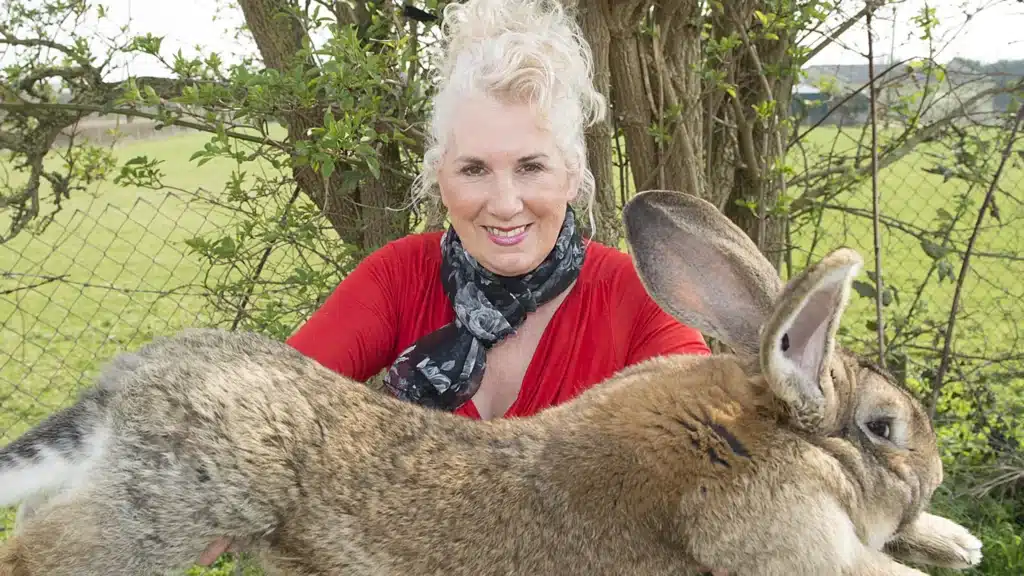
Conclusion
In the world of rabbits, size is not a one-size-fits-all concept. These enchanting creatures exhibit a remarkable range of sizes, from the tiny and delicate Netherland Dwarfs to the majestic and substantial Flemish Giants. A rabbit’s size is a product of various interwoven factors, including genetics, nutrition, environment, health, and care. The vast array of rabbit breeds showcases the intricacies of nature’s design, where each breed is a testament to the genetic diversity that has evolved over time.
Understanding how big rabbits can get offers a window into the complexity of life’s intricacies. It highlights the interplay between biology and environment, showcasing how genetics determine the baseline while external factors influence the outcome. As prospective pet owners, enthusiasts, or researchers, comprehending these factors fosters a deeper appreciation for the uniqueness of each rabbit and the care required to nurture their growth.
Ultimately, whether you’re drawn to the charm of the petite or captivated by the allure of the colossal, the diverse sizes of rabbits mirror the beauty and diversity found throughout the animal kingdom. Just as we embrace the individuality of these creatures, so too can we admire the rich tapestry of life they contribute to, reminding us that the wonder of nature lies not only in its grandeur but also in its smallest details.

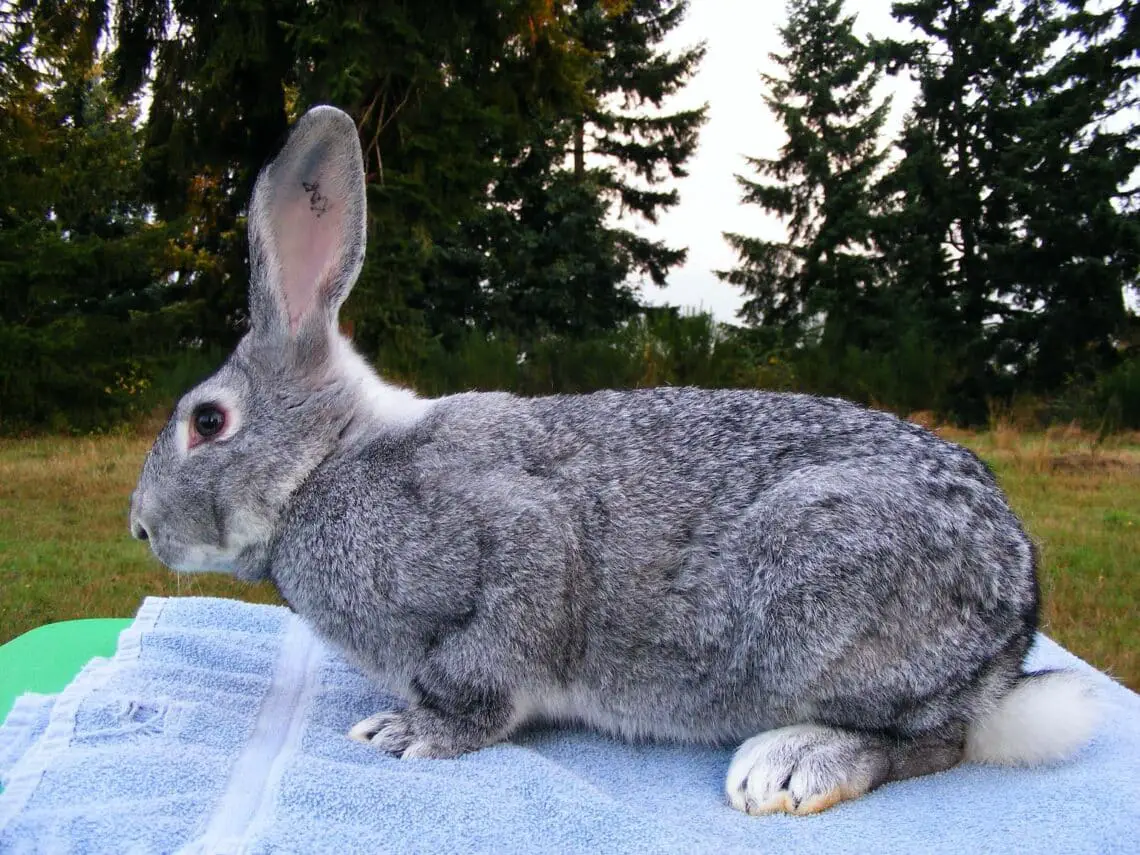
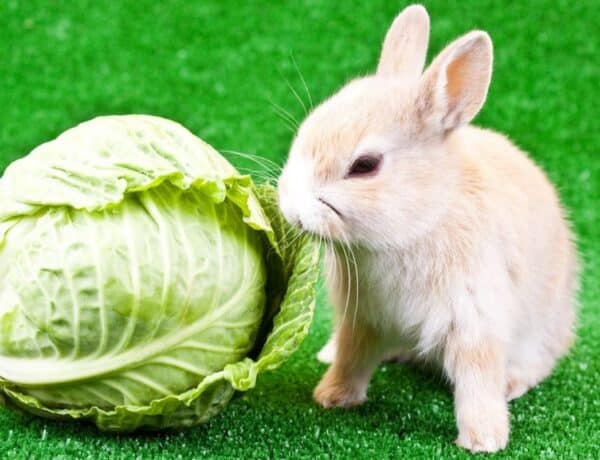
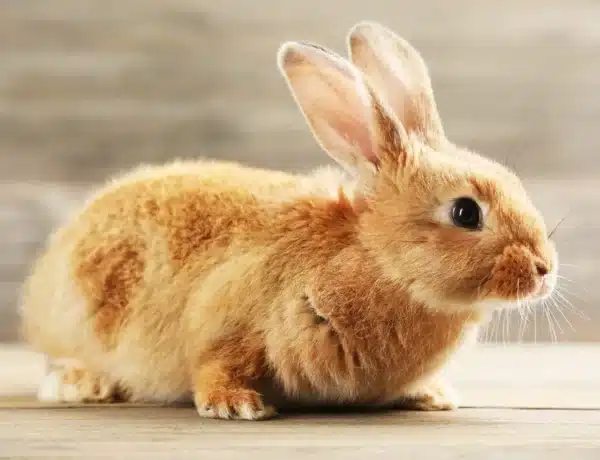
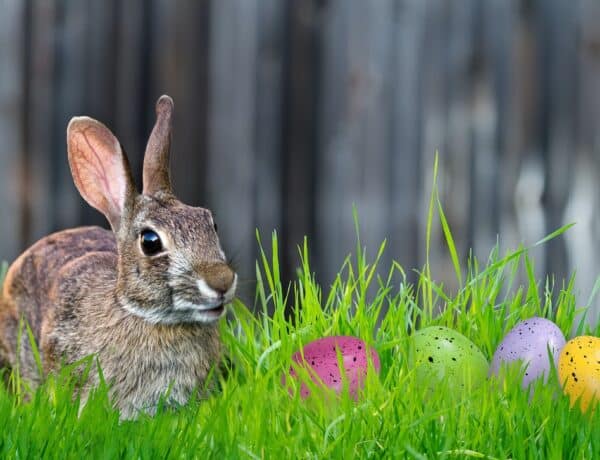
No Comments